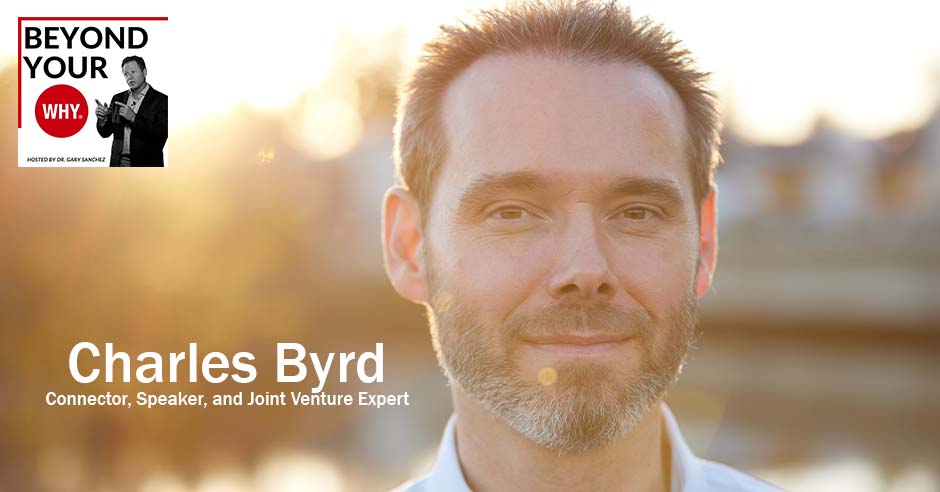
Trust means everything. You have seen that in the ways great relationships are based on trust, when individuals and businesses go to great lengths to demonstrate that they are trustworthy, and when things crumble from the lack of it. In this episode, Charles Byrd, the epitome of the WHY of Trust and the co-author of the best-selling book, Internet Marketing Secrets, shares his story and experiences about building relationships with trust. He talks about joint ventures and why the transference of trust makes it a qualifier to build partnerships in businesses. However, being a source of trust has its share of challenges. And Charles lays down the ways you can overcome them and use them to your advantage. Tune in to gain insights and arm yourself with this information, so you can make fully informed decisions about who you associate with.
—
Watch the episode here
Listen to the podcast here
The WHY Of Trust: Building Successful Joint Venture Relationships With Charles Byrd
We go beyond talking about your why and helping you discover and live your why. If you’re a regular reader, you know that every episode, we talk about 1 of the 9 whys, and we bring on somebody with that why so you can see how their why is played out in their life. In this episode, we’re going to be talking about the Why of Trust, to create relationships based upon trust.
If this is your why, trust means everything to you. You believe that when relationships are based on trust, the sky is the limit. You will go to great lengths to demonstrate that you are trustworthy and do things such as become an expert in a given area so you can establish that you can be trusted. You look to do things correctly because that is what a trusted person would do.
People with your why often enjoy numbers because numbers don’t lie. If someone breaks your trust, it feels like a knife in the gut. You find it almost impossible to have a relationship with them after this loss of trust. Although you tend to have fewer friends, you build loyal and lasting relationships with those people you can trust.
I got a great guest for you. His name is Charles Byrd. There is an official bio and his incredible background in success in Silicon Valley, but that’s not as important. What you need to know about Charles is his proven record of helping others create super profitable joint venture partnerships or relationships. Not only is he one of the most connected people in the online space, he knows how to help you set up lucrative promotional deals that clients and students book hundreds of thousands of dollars of business.
He knows how to help you get qualified leads without you needing to do paid advertising or the need for complicated funnels. I am sure that’s music to your ears. If you want to grow your business, Charles is one to pay attention to. Charles’s work on relationships, joint ventures, and frictionless systems. He has been featured in Forbes, ABC News, SiriusXM, Funnel Magazine, and The Science of Success. His new book called Internet Marketing Secrets is an Amazon best seller. Charles, welcome to the show.
Gary, thanks so much for having me. It’s a pleasure.
I’ve been looking forward to this because we are working with you. I have gotten to learn some things about you as we have had our conversations, but the rest of our readers haven’t yet gotten to meet you. I want to make sure that that happens.
I appreciate the opportunity to do so. From the moment we met, and you explained what you do, I have been intrigued by this. As you shared my results of going through your why process and other people we’re working with, it’s been interesting. What you’re doing is cool, and I look forward to the insights we’ll both discover in our conversation here.
Charles, let’s go back to when you were younger. Where did you grow up? What were you like in high school?
When I was young, I lived in Canada up until the second grade. I have dual citizenship. My mom was Canadian, and my dad was from the US. Around the second grade, I moved to California, where, for the most part, been ever since, other than Stenton near London for a year. I went to high school in Southern California and some in Central California. I had some bodyboarding, beach time, and some time in the Central Valley, which was fun.
What were you like as a high school kid? Were you outgoing? Were you more reserved? Were you with a big group of friends or a small group of friends? Tell us a little bit about you.
[bctt tweet=”It’s empowering to come up with your own fun thing and then bring that to life and have a taste of what the next phase would be regarding entrepreneurship.” username=”whyinstitute”]
I’m always very social. I’m always feeling a little step ahead, simply because I had an older brother and my peer group was two years older than my classmates. I was exposed to ideas, thoughts, and different things that felt a little ahead of the curve. I’m a class clown, but not in an annoying way, but in a fun way and pushing boundaries. I’m enjoying time with friends, family, adventures, riding skateboards, and things like that.
What do you mean by pushing boundaries?
I’m trying things probably before my peer group did and driving perhaps a little faster than most people might. It’s those boundaries. I’m being exploratory, figuring out life, not being afraid of experiences, and being a person who says yes to more things in life than not.
Were you into sports or more into the beach thing? Were you involved in your school or not so involved in the school?
I’m not super involved in school. I was probably a B student. My grades went up dramatically in my Master’s degree than they did in high school. I’m into writing, skateboarding, and music. I started playing the drums at a young age and later guitar, songwriting, and creative endeavors that, unlike sports, football, or things like that which required team activity. Most of mine were independent that you could do it on your own schedule.
You’re not as much of a team player but more of a fun, good friend and someone fun to have around.
Snowboarding, adventures, trips to the beach, and those kinds of adventures.
You graduated from school in Southern California. Where did you go to college?
I started at La Sierra University in Southern California. I was there for a year. My brother also went to that school. In my sophomore year, I went to England and went to school there, which was a phenomenal experience. Most of the students were American. There was a lot of bonding. You’re way closer to people in that environment because they didn’t have their families and networks. There are a lot of tight connections there. I’m the social life of a party person. On Tuesday, you’re studying Art History books in class, and Thursday, you’re standing in front of the art in London and traveling Europe on breaks. It’s a good way to expand the mind and continue that sense of adventure.
What were you majoring in?
Business Information Systems, which is after I finished school in Northern California, which I liked quite a bit more than Southern and stayed up here. I have a Business degree in Information Systems. A little later, after I was in my corporate career, I also got a Master’s degree in Information Technology again.
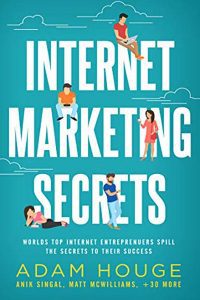
Tell us about your business or career path after college. Where did you start working? What did you get into?
I was raised with the mindset of, “Work hard, go to school, get a job.” The concept of entrepreneurship never came up. Even though I got a Business degree, you hardly even heard about it in the programs at all. It was, “Go to school, get a job.” That’s pretty much what I did. I got a job for a big software company in Silicon Valley. I worked for a billion-dollar software company for several years. I started on the help desk doing tech support and so forth. I’ll caveat that throughout college, I was a server in restaurants and also played in a band for several years, doing 75 shows a year around the Bay Area.
Certainly, the restaurant type of role is a customer service role, so you learn to take care of people. In the band context, booking gigs is reaching out to people, connecting, and lining up deals and bookings. Some of that fed into what we’ll be talking about a little later. I worked at a help desk for several years. I ascended the ranks there into higher levels of support. I started running large projects across a 6,000-person enterprise.
I founded the Project Management Institute. I trained twelve different project managers. I guided them all to get PMP certified. That’s Project Management Institute. I also got Cisco CCNA Certified. I ended up creating my own department, the Social Media and Collaboration Department, but I’m still in IT, which is not the best place for creative and social people. IT does not scream either one of those things.
Working to keep my life interesting there, I created something called IT TV. I would do interviews like CNET. I don’t know if you’ve ever followed things on CNET, but I made my own show like that. I started creating creative commercials, advertising the projects I was rolling out across the enterprise. I would choose the technology, create the international teams of 30 to 50 people, roll out the technology over sometimes 8 months, 1 year, or 2 years, and market and train internally within the company.
I started creating fun, punchy videos, and all the other departments wanted me to make them for them. I felt like I had that creative outlet. It was empowering to come up with your own fun thing and bring that to life. I always had a taste for what the next phase would be regarding entrepreneurship, but it’s a little too comfy in the corporate world to make that jump out of the gate there.
Is IT TV a TV station within the company?
Yes.
It’s how to connect with everybody, bring information to everybody, and excite people, that type of thing.
I would do interviews with people that were rolling out new technology, adopting a new strategy, or different kinds of updates like that. I rolled out Webex across the 6,000-person enterprise. I made a quite amusing commercial with my kids and nephew at the time, who were little kids. They’re having a whole conversation about Webex, and it was a huge hit. That’s blending the creative side but also the process, execution, and management side of things.
You have been there for several years. All of a sudden, you decide, “I’m done with this.” How did you transition to the next space?
[bctt tweet=”If there’s an impact you want to make, if there’s a quality of life you want for your family, now is the time to do it.” username=”whyinstitute”]
There were two elements involved. I talked about creating a business for a while. I even formed teams of friends and other people to create a company. We researched products. I was creating a company where we have gear that would film snowboarders going through a park and automate, giving them a video back at the end of their day. When you’re trying to fit stuff in on weekends or little holidays, you can’t get enough traction at it.
A motivating thing was the following. My mom was an OB nurse. She ran a hospital in Central California and also taught nursing school students. I got a call from her one day. She had that serious tone in her voice. I was like, “Maybe one of the kids she adopted from Sierra Leone was having trouble in school.” It wasn’t that. She had been in a minor car accident the day before. She thought she was pressing the brake but wasn’t and hit the car in front of her.
On that day, she was reaching for a fork and physically kept missing it by six inches. They took her to the hospital and found she had two stage-4 brain tumors. I could barely walk into the house to tell the family that. I piled into the car, went to be with her, and went into brain surgery that night. Effectively, I stayed at her place for the next year, taking care of her. My mom lived one year to the day from when I got that call. It crystallized that life is short. If there’s something you want to go after, if there’s an impact you want to make, if there’s a quality of life you want for your family, now is the time to do it. That fueled being a lot more confident in making decisions that, in the past, would have frightened me off.
My daughter wrote on this whiteboard here. It says, “One more day is one person. I’ll start in one more day. We’ll do this tomorrow.” The other person says, “This is day one. We’re starting now.” It lit that fire. There’s a massive difference on those two things. “I’m going to start my diet next month. I’m starting my diet now.” There will be a vast difference between those two people’s outcomes.
That lit a fire under me. I decided to create my own company. I left my corporate job and chose the entrepreneur path. I have this piece of wood made that says, “I can. I will. End of story.” Meaning I’m committing to this no matter what. I’m burning the boats. I don’t care what anyone tells me. My dad was like, “Go get another corporate job.” I’m like, “No.” He was always super supportive, but that was the path he was hoping I would take.
That event and commitment to trying something new and figuring it out are mandatory to making large shifts in your life. I can assure you, it leads to a far higher quality of life, more freedom, passion, better conversations, and opportunities you can’t even fathom compared to living in a nice little corporate world.
That time with your mother, which was a negative turned out to be positive.
I try to turn any negative into positive systematically. I try to take things that, on the surface, are annoying, but you find what is positive about it. There is some turmoil in that adjustment. I didn’t even know what company I wanted to make. I knew I was going to make something. You got to start with where you’re at. Baby step, there’s no straight line. I’m sure you’ve seen those cartoon analogies.
You can’t connect the dots looking forward. You can only connect the dots looking back.
The underlying thing is not being afraid to take the next step and not being afraid to commit to doing that. Once you reprogram your own way of operating, it is empowering. I’m sure we’ll get to this coming up too. I am always social. I always had a friend network, but nothing like now. It was a conscious decision to start connecting with more people in a deeper way and systematically provide them with value. It’s a learned skill. You don’t have to naturally be. I’m sure there are inclinations that support being good at connecting, finding opportunities, following up, and providing value, but it was all a learned skill that I systematized and took to a whole other level.
Let’s talk about that for a minute. You said, “Not being afraid to take the next step.” Is that a real statement? Is that reality? When you took that step, I can’t imagine you weren’t afraid, but you did it anyways.

That’s a far more accurate way of saying it. You may have some reservations about it, but you’re willing to do it anyway. I was pretty lucky because of my wife. I’m like, “I’m going to start a company.” This is probably about as deep as the conversation went. She was like, “Awesome. Go for it. I believe in you.” I have friends that didn’t have that support. They’re still trapped in the jobs they hate because of it. It is important to have supportive people around you or have the internal resolve to do it anyway.
You leave your corporate job. What’s the first business that you started?
I started my company, and I had some input. I had some friends I had gone to college that started physical products companies, wooden sunglasses, and wooden watches. About the time they were buying their third building in San Francisco, I was like, “My peer group can do this and be successful at it.” I had no idea this was inspiring.
I was chatting with them about what I could do. They were like, “Don’t do physical products like us. We’re sourcing stuff from all over the globe, having to put it together and ship it out. There are all these crazy logistics. Go for information products or services.” A light went off immediately. I’m like, “I’m already good at teaching and presenting. I have all these skills. How can I now package them?” All I needed at the time was to learn the marketing side.
I created a company. I started going to a lot of events. The product I decided to create was a low-ticket productivity course. I had no one to sell it to because I had no list and connections. As noted, I went to a lot of events and started connecting with people online. I quickly found my new entrepreneur peer group already had my ideal clients in their communities on their email lists. I started setting up presentations to other people’s audiences, delivering high-value training, and offering the deeper dive course.
I started getting traction, making sales, and making a positive impact on those people that invested. I’m growing my list rapidly. I thought, “Instead of doing this here or there, what if I take my IT and systems background, simplify, and systematize the entire joint venture process?” which I did. Eventually, people wondered how I booked 2 to 6 joint venture promotions per week for my own offers. I was at a mastermind in Aspen. My phone is lit up with text messages and emails. People are knocking on my room door. They were like, “How the heck do you do that?” I put together my first live high-ticket event called Pure JV.
This gets back to one of the points you were saying. When you commit to something specific, the road will form right in front of you. It will materialize. When the people around you know what you are seeking to do, the resources will appear. When I decided to put together that high-ticket event, I had never done anything like that. When I said I’m doing it, I’m doing it at this date. I’m doing it at this place.
People came out of the woodwork. They were like, “I’ll build your landing page. I’ll write you a copy. I have friends I can refer to this. I want to go to this.” It came together like a magnet. The event went well. Everyone got a ton of value out of it. By committing to something specific, that’s how you create the framework. You can keep making it more robust and continue iterating because continuous improvement kicks in there.
Your first event was called Pure JV. For people that don’t know what JV even means, what are you talking about? What is a JV? What is that?
That means a Joint Venture. It’s not like two companies merging, getting married, and doing things together forever, although there are some of those. They’re more like promotional partnerships. An example I like to use is Brian Tracy. Brian has a deep career, all these books on sales, and high performance. He has created a following of 500,000 people on his email list. There are various kinds of joint ventures. Even a referral is a joint venture. Brian has promoted me six times to his list. Brian has an audience that follows him for those particular reasons. I have a presentation and content that strongly matches and accentuates that message. It builds on it.
He will mail 500,000 people inviting his audience to my training. I deliver high-value training to those folks in a webinar format or maybe speaking in person, and I offer a deeper dive program for people who want to go further with it. The revenue that comes in for the students or clients that sign up that’s shared with Brian and me is a joint venture.
[bctt tweet=”Do not be afraid to take the next step and commit to doing that.” username=”whyinstitute”]
It’s his audience, and my product is being leveraged in a highly complementary way where everyone’s winning from the interaction. His folks get content he has never made that he may not be an expert, but it complements why they follow him. I get the benefit of a massive audience that I didn’t have previously. Everyone involved is coming out further ahead.
I have systematized the process of creating joint venture strategies for companies. I’m helping them identify ideal partners, how to get the conversations, how to guide those conversations to land actual JVs, and operationally, how you conduct it, what you need to send to the partner, what resources need to be in place, like landing pages, webinar tools, or things like that, and how to turn each one of those into 2 or 3 more. That’s one example of joint ventures. Anyone reading who has a business, who has ever received a referral, you can set that up in a systematic way. That’s a joint venture. You have people scouting your ideal clients for you all of the time.
People will say, “Charles, I get an email almost every day from people that have a list of people I can buy. They’ll say, ‘Do you want to buy my list of dentists? I’ve got a list of 120,000 dentists.’” How’s that different?
Those lists won’t perform well. Joint ventures are strategic. These are two professionals putting their minds together to serve that audience in the most effective way possible and create a successful promotion itself, so it does and performs well. When you’re buying a list like that, you’re not the first person they have sold it to. These poor people have been slammed with all things they typically never asked for. Those lists of people are opting out, or they’re black listing any mail coming through from there. Their actual effectiveness is quite low. I know a few people who have done that successfully. I never even entertained the idea because it didn’t seem like something that would work well.
To me, it’s missing the one big ingredient, which is the influencer.
Also, the transference of authority. That’s a massive part of why joint ventures are powerful. If you don’t mind, I’ll use you as an example. You’re about to be on JJ Virgin stage. You’re about to do some great things with her. You have a ton of authority in what you do already, but JJ’s audience is probably the first time many of them will be exposed to you.
The fact you’re there, you’re being featured as an expert, which you are. She was saying, “You guys have to hear from Gary. I twisted his arm to get him here. This guy is phenomenal. He is helping people discover their most fundamental motivation for everything they do. This translates to you personally, your team, and the success of your business. Write down notes and take action on what Gary was saying.” Those people will. She transferred all the trust and authority she has built up with her people, who love her, follow her, and read everything she writes. She transferred that right over to you.
That means your conversion rate and the level of impact you’ll make from people listening to what you’re saying and taking action turned up from 2 to 8 simply because of that. That’s one of the powers of joint ventures and why warm traffic versus people who pay for Facebook ads, YouTube ads, or different kinds of ads. This is warm traffic. This is endorsed JV traffic. This is JJ saying, “Listen to Gary. I vouch for him. He is phenomenal.”
If you are a regular reader, you know that our vision is to be the first step in self-awareness and the first step that people take when trying to figure out who they are. Our goal is to impact a billion people in the next several years. Think about that. How the heck are we going to do that? How are we going to impact a billion people?
One of the things you said earlier was, when you put it out there, people seem to appear that say, “I can help you do that. I want to be part of that.” That’s the essence of joint ventures. Think of how many ads I would have to buy to make that happen. An unfathomable amount of ads versus working with people that already have massive influence that can present this concept of WHY.os or the software that will do it to their audience. Compare for everybody buying ads, which can work, but how that works versus joint venture.
I’m a fan of diversifying lead flow for people that don’t run businesses. What that means is getting in front of people you can serve with your product or service. There are three main ways to go about that. You can pay for ads. This is when you’re on a website or your Facebook feed. You see ads there. You can create content, which, if you do that long enough and consistently enough, usually over a year, you will start attracting people, or there are joint ventures where people who already have your ideal clients and have these massive audiences that trust them to bestow that trust over to you and highlight you as an authority to be listened to, along with showing how that expert, who has the audience, serves that audience, shows how what you do, compliments it, strengthens it, and enables them to go further.

I’m going to use an example of a large coaching Institute, which Gary, I can’t wait to introduce you to. They’re doing $42 million a year. They service tens of thousands of coaching clients with certifications. By Gary getting connected with these folks, understanding how to line up a joint venture with them, landing that deal, getting in front of all of their current and previous coaching students, and getting in front of everyone else on their list who hasn’t even become a coaching student yet.
Look at the expansiveness of that reach. Now, all of these coaches have their own clients that they’re servicing, supporting, and helping. If WHY.os has been an integral part of getting them grounded as the first step in their journey, they’re going to bring it to all the people they’re serving. This does or can have a domino effect that replicates you out to that billion dramatically faster. As my friend Yanik Silver puts it, he wants to light 1,000 suns that themselves light 1,000 suns. This is the replication effect that joint ventures have the power to bring.
If you’re reading this, you might be saying to yourself, “I got it. In a joint venture, you talk to somebody, set up a thing where they’re going to promote to you and sell to their audience. I get it. I have heard it.” That’s what I thought. As we dove into it, what I didn’t understand was the value of systematizing the process because there is a big difference between doing something and doing something right. You can wing it but what you’ve created is different than winging it.
Maybe give an example of what you have systematized. Let me ask you a question because this was fascinating to me. You and I are going to set up a joint venture. I’m meeting you. You have a process of questions for me to ask you to make sure we’re the right fit. Now we decided that you and I are going to do a joint venture together. What happens after that?
We come to that agreement. We want to do this. It’s a great fit and service to the audience. The next thing we do for one, we choose the date for the promo. We choose the time. We choose what the specific promotional mailing dates are. We talk about when you can expect to get those emails over to your team to send out to the audience exactly when that will happen.
Every nuance of the process is systematized. An example I like to give is we give you the pieces to create the cookie cutter. After that, you’re pushing it down over and over again. You’re replicating something over and over, along with understanding how to turn each of these joint ventures into 2 or 3 more, but it’s what’s communicated to the partner and when. It’s what’s communicated to your own team to understand what to build out and by when it’s taking resources to execute a promotion, “Let’s invent some examples, but something like a landing page, creating a webinar, scheduling the webinar, and duplicating that for each promotion that’s being set up.”
Every part of it is systematized both internally within your team and with the partner, with the goal of taking the thinking out of the process. This is a paint-by-numbers approach. Instead of wondering what to do, what asset, or how to track it, it’s all in one type of end-to-end solution that makes it easy for a company like yours to get it up and going, and you’re autonomous. You have a continuous traffic source and the autonomy to execute that over and over.
I heard you say that the first time, and you probably said it again. I still didn’t get it until we did it. I was like, “Now I get what you’re talking about.” It’s one ear and out the other until we went to do it. Another example of that in what you teach, and maybe you can talk a little bit about this as well, is you talked about this thing called the irresistible offer.
“I know what you’re talking about. I’ve heard irresistible offers before. I get it. You stack on all this stuff to it so that it seems like you’re buying a whole bunch of stuff, but most of it, you won’t.” I had in my own mind what that meant. When I went through the process, it was so much different, and it has revolutionized the conversion. Conversion is so critical. You can get a lot of people on an event, but if you can’t convert anybody, what good was that? You got more frustrated.
We think of this in a comprehensive way. Joint ventures bring you warm traffic. That’s awesome. That’s only one piece of the puzzle. I am holding up a doll. This is George from the Beatles. This is the warm traffic. That’s great. We have the irresistible offer. We got Paul here. We then need the overall strategy. We got John. If you get these things right, you have a brilliant strategy. You have a fantastic offer that’s perfect for your ideal clients, and you have warm traffic. What you have there is a hit. You have a comprehensive approach to serving more people and getting great results for your partners.
Partners love promoting people that fit well with their messaging community, get people results and make them lots of money. It’s certainly not hard to line up JVs when every time they work with you, they get paid. Their people come up and tell them what a huge, positive impact you have made for them. Having something that converts well, that’s ultra well aligned, and having a strategy to do this methodically simplifies what you’re doing and integrates. It sounds easy, but how do you do that in reality? That’s precisely what we help companies do.
[bctt tweet=”When you commit to something specific, the road will form right before you.” username=”whyinstitute”]
The irresistible offer, for those of you that aren’t familiar with it, this is my take on it. Hopefully, I’ll say it accurately. You have your offering, and it’s great for the audience, but you go through the process of saying, “What are their objections? What are their reasons for not purchasing? What could come up that would hold them up?” Once you figure those things out, where there are three things, you create a bonus that addresses that objection. In my case, I offer them a workshop. I’ll speak at an event. I’ll take the audience through discovering their why, how, and their WHY.os.
I know what’s going to happen next. They’re going to say, “I got to have this for my team.” The next thing I’m going to offer is, “Let’s do this for your team and your business.” One of the objections could be, “When you’re going to offer that, I can’t make it. How am I going to do that? What if it’s on a day that I’m not ready for, or the only day that you’re going to offer this, I can’t be there?” How would you create a bonus or a way that addresses that objection?
Let’s say their objection is, “What I did is I created multiple times during the month that we’re going to host this event every month.” It gives them time to plan to be at it. What if an objection was, “What if I hire somebody new in three months? What am I going to do?” You create bonuses that allow you to handle that objection.
That is certainly right, along with incentivizing making a decision in a timely manner because they might go, “This is cool. We want to do it. We’ll get back to you in six months when we feel like it.” They won’t because life moves on, or some might. If you can help incentivize making a decision in a timely manner, this means you’re getting them on board where they’re excited, motivated, and sink their teeth in. Anytime they’re following what you say like that, they get results, and everyone is winning. It’s formulaic. The strategies and offers are different in different markets. That’s why we work hand in hand to help design that with you to ensure the best outcome possible.
I didn’t want to have you on the show to do an infomercial for you. That was not my goal, even though maybe it feels that way right about now because I have been impressed with what you have shared with us, what we’re doing, and the way that it’s connected the right people to us to bring what we’re doing to the world. What results have you seen this bring to people? How has that transformed their businesses?
It has been quite remarkable in many cases. Five of the clients I have worked with over 2021 have done $1.5 million to $6 million in revenue, specifically from working with us. I will highlight the $6 million one because I like the ring of that. A gentleman out of Australia named Jackson Millan, who has $11,000 offer is helping businesses like ours, focus on our core numbers, and retain more personal wealth, was dependent on Facebook, mostly for his traffic. He was doing well with it until Facebook shut down his account.
Imagine running a business, and your primary lead source evaporates. It’s an unnerving thing. In any case, he hired me to help him with his JV strategy, identify ideal partners, get those conversations, book the JVs, and execute them. He is a quick-start guy. He went a little overboard. He booked 70 joint ventures in 2 months. I checked in with him a few months back. He has done $6 million in revenue and collected $2 million in cash. He was messaging me. We share intros and referrals all the time. He was a lovely guy.
We work with coaches, consultants, course builders, and so forth. It’s tying it back to the why, being the trusted source for people, simplifying things for people, and bringing a structure and a pathway to do it the right way. We happen to be talking about joint ventures, but this is my why. You helped me see it in a clearer way. I don’t think I would’ve been able to articulate it like that. It’s grounding and important. I’m building that into a lot of my communication. I’m putting it inside my stage talks. I have several of those coming up, like Genius Network and others.
I’m going to mention the why, which you also recommended I do. It gives people the answers they need to listen to what you’re saying more effectively because they know what’s driving you underneath. They are also spot-checking. Is what you’re saying congruent with the why you expressed? This is part of the clarity you help people with this important work. I’m thrilled you transitioned your own career to enable all of us to do a lot better job with that.
What Charles is talking about is his WHY.os. His why is to create relationships based on trust, which we’re talking about. You can tell now that he is the trusted source. He is the guy in this field. All the people that you know use him to learn this process. Sometimes you do it for them. How does he go about doing that? His how is to simplify things, make them simple and easy to use, and create processes, structures, and systems that are simple. Ultimately, what he brings is the right way to get results.
His why is trust. His how is simplify, and his what is right way. I’m not sure there’s a better WHY.os for what you do than what you have. I can trust you. I can count on it. If you tell me something, it’s going to be the truth. You’re going to simplify it to where I can do it. You’re going to give me a step-by-step process to get it done. How much better could it be? That’s what I would be looking for.

It’s highly complementary because your process gave me the clarity to express it that way, even internally, to recognize that. That’s what I have been doing for a long time. Now I have a lot more succinct way to communicate it. When I reread my why, I pull this up frequently. It reinforces that. When you have that clarity of your own purpose, it becomes a sounding board for everything you’re doing.
Is what I’m doing now simplifying for people? Is what I’m doing now the right spotlight as a trusted source? It gives you a framework for decision-making. It’s cool how you’ve built out the platform, how your vision for it is big, and how I’m able to serve you because of my why to reach those billion people. It’s a full circle. It’s how I’m seeing this.
Last question for you, Charles. What’s the best piece of advice you have ever given or the best piece of advice you have ever been given?
I certainly didn’t make this. It’s a title of a book. Relationships are everything. If you look at anything that matters in your life, your family, your kids, your significant other, and your clients, the only thing that brings value to life is relationships. If you look at people far further along in their life, all that ever mattered were their relationships. Recognizing relationships is everything. Systematically find ways to stay connected and provide people value. When you incorporate this into your everyday life and behavior, and you’re in service of other people, opportunities will never end.
You will feel good and congruent. You’ll be making a positive impact on the people around you. That replicates. You become a role model for people. When you’re looking out for them, they, in turn, look out for others and you. That helps us all make the world a better place. As cheesy as that may sound, it’s a fact. Relationships are everything.
Would somebody with the why of trust say anything different? The why of trust is to create relationships based upon your success. It happens when we create relationships that are based on trust. That’s perfect. Charles, thank you so much for being here. If there are people reading that say, “That is the guy that I have been looking for. I need to learn how to do joint ventures. I need to learn how to get my message out in a bigger way,” what’s the best way for people to get in contact with you?
They can pop over to CharlesByrd.com. There’s a contact form on there where you can shoot an email to Success@CharlesByrd.com. I love to hear from you. Gary, thanks so much for having me on the show.
Thank you so much for being here, Charles. I know we’re going to be doing a lot of work together in the future as we are now.
Thank you.
Thank you for reading. If you’ve not yet discovered your WHY, you can do so at WhyInstitute.com. You can use the code PODCAST50 to take the WHY discovery at 50% off. If you love the show, please don’t forget to subscribe below. Leave us a review and rating on whatever platform you’re using because that will help bring this to the world. Thank you so much for reading. We’ll see you next episode.
Important Links
- Charles Byrd
- Internet Marketing Secrets
- Webex
- Pure JV
- Genius Network
- Success@CharlesByrd.com
- WhyInstitute.com
About Charles Byrd
 Today, I have the honor to introduce to you Charles Byrd. There is the official bio and his incredible background and success in Silicon Valley, but that’s not as important. What you really need to know about Charles is his proven record of helping others create super profitable joint venture partnerships.
Today, I have the honor to introduce to you Charles Byrd. There is the official bio and his incredible background and success in Silicon Valley, but that’s not as important. What you really need to know about Charles is his proven record of helping others create super profitable joint venture partnerships.
Not only is he one of the most connected people in the online space, he knows how to help you set up lucrative promotional deals that has his clients and students booking hundreds of thousands of dollars of business. Yep, he knows how to help you get qualified leads without you needing to do paid advertising or the need for complicated funnels. I am sure that’s music to your ears. If you want to grow your business, Charles is definitely one to pay attention to.
Charles’s work on relationships, joint ventures, and frictionless systems has been featured in:
- Forbes
- ABC News
- SiriusXM
- Funnel Magazine
- AND THE Science of Success
His new book called “Internet Marketing Secrets” is an Amazon best seller.
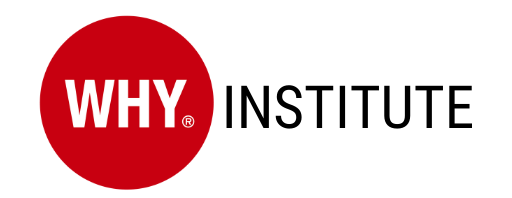
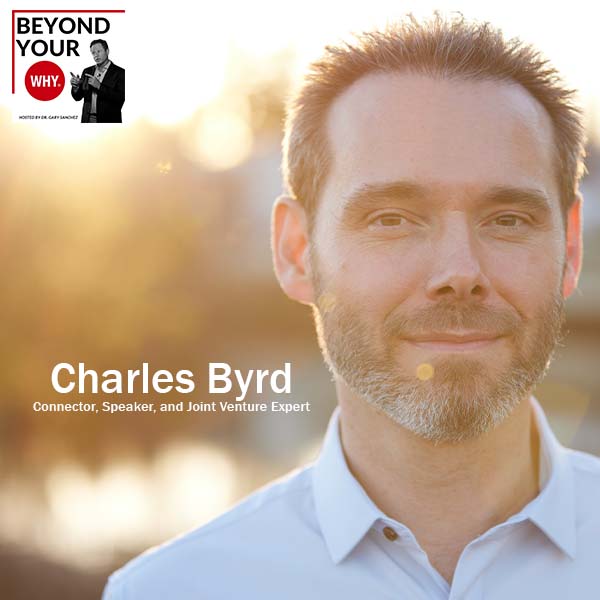
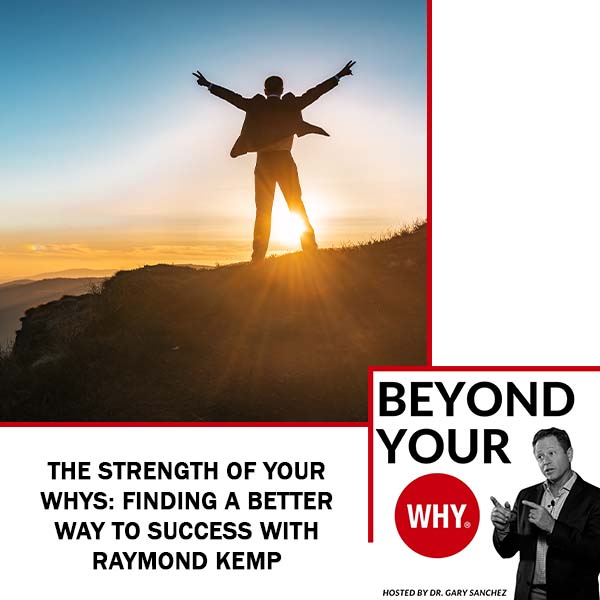
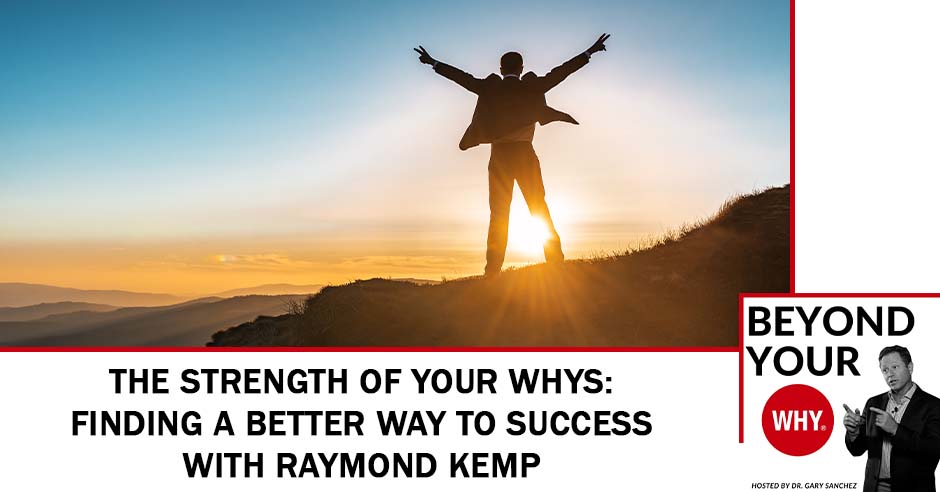





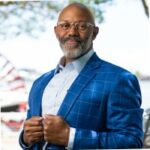 Raymond Kemp is a highly experienced senior executive in leadership and Human Resources. He has over 10 years of experience at the highest levels of the US Navy. As the fleet master chief of Europe and Africa, In his final duty assignment Raymond directed and influenced over 56,000 service members, civilians, contractors and family members across the European and African continents.
Raymond Kemp is a highly experienced senior executive in leadership and Human Resources. He has over 10 years of experience at the highest levels of the US Navy. As the fleet master chief of Europe and Africa, In his final duty assignment Raymond directed and influenced over 56,000 service members, civilians, contractors and family members across the European and African continents.